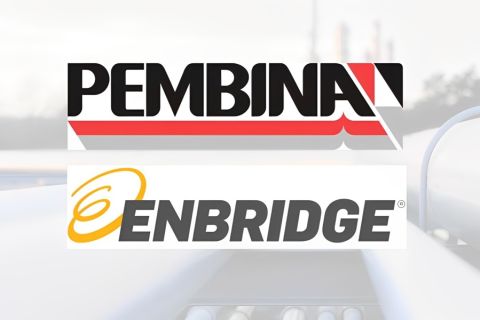
The midstream sector has taken its share of hits during this current industry downturn. However, as oil and gas industry veter- ans well know, the industry is cyclical and there are always opportunities to exploit. One of these opportunities is to purchase midstream assets at valu- ations that are lower now than several years ago, precisely because of the industry downturn.
Midstream M&A is driven by a variety of considerations. Particularly in a downturn, sellers (including upstream and midstream compa- nies) may need to sell some assets to shore up their balance sheets or focus on their core strengths. On the buyer’s side, a midstream company may purchase midstream assets to build out its geographic footprint in a given basin, diversify its asset base or expand the suite of services it is able to provide to its customers. When fewer capital investment projects are economically viable, M&A can be an effective means to maintain a compa- ny’s growth trajectory.
As well, there is a considerable amount of private equity money look- ing to invest into the midstream sector.
Deal metrics
According to Deloitte’s Oil & Gas Mergers and Acquisitions year-end reports for 2015 and 2014, midstream transaction value increased from approximately $80 billion in 2014 to $96 billion in 2015 (note, though, that the $96 billion figure for 2015 includes the now-abandoned $33 billion merger between Energy Transfer Equity LP and The Williams Companies Inc.), with the total number of transactions (approxi- mately 50) being the same in both years. According to Deloitte’s midyear 2016 report, midstream transaction value was $20 billion for the first half, down from approximately $37 billion for the first half of 2015, with the deal count being 20 for the first half of 2016, down from 28 deals for the first half of 2015.
Midstream M&A received a jolt in September when Enbridge Inc. and Spectra Energy Corp. announced that they had entered into a merger agreement to combine the two companies in a deal valuing Spectra Energy Corp. common stock at approximately $28 billion.
There is some evidence that the valuation gap between potential buyers and sellers of midstream assets (an impediment to deal activity) is starting to narrow, and interested buyers and sellers will want to be prepared to move quickly if an attractive M&A oppor- tunity presents itself at a mutually acceptable price. This article provides a general overview of the M&A deal process, due diligence and the acquisi- tion agreement, and examines some of the significant issues that midstream companies should be aware of as they review and negotiate potential pur- chases and sales of midstream assets. The discussion will focus on acquisi- tions of midstream assets and equity interests in companies that own mid- stream assets (in each case generically referred to as the “target”), as opposed to a merger of a target company and the buyer (although many of the con- cepts discussed below would be appli- cable in a merger deal). Finally, the discussion will concentrate more on acquisitions from unaffiliated parties, (as opposed to a sponsor).
The deal process
In the early stages of a potential M&A deal, the prospective seller and buyer typically sign a confidentiality and non-disclosure agreement. The agree- ment generally provides that neither party may disclose confidential infor- mation that it obtains from the other party to third parties, subject to some customary exceptions. Following the signing of the confidentiality and non-disclosure agreement, the seller will provide the buyer and its professional advisors with access to the various legal, financial, accounting and other docu- ments relating to the target, typically via an online data room. The review of these documents is referred to as the due diligence process, and is described in more detail below.
If the parties come to a general understanding of the key terms and conditions (including the purchase price) of the proposed transaction,these terms and conditions are often- times set forth in a letter of intent, or LOI. The LOI should state that it is not a legally binding document, except for such sections of the LOI that are expressly identified as being legally binding on the parties.
After the parties sign the LOI, the lawyers will begin drafting the acqui- sition agreement, which is described in more detail below. The acquisition
agreement will contain the key terms of the transaction as set forth in the LOI, as well as other customary terms and con- ditions. Those board and shareholder approvals that are required for the transaction will be sought.
The sale of the target will take place at the “closing” of the acquisition agreement. At the closing, the parties
may enter into any number of ancillary agreements, which are to be performed after the closing, including commercial agreements. If the seller has engaged an investment banker to market the deal to potential interested buyers and/or the target is a public company, there would be a few additional wrinkles on the brief sketch above.
Due diligence
During the due diligence review process, the buyer and its professional advisors will review various documents and information relating to the target pro- vided by the seller, to better understand the business, assets and liabilities. One of the overarching purposes of the due diligence process is to understand the potential risks and liabilities presented by the prospective transaction. The due diligence process can aid the buyer in understanding whether it wants to do the deal (and on what terms, including an appropriate purchase price) and whether certain assets or liabilities should be excluded from the deal and left with the seller.
The scope of the due diligence process will vary from transaction to transaction, and at a minimum should include investigating and confirming the matters that are of most importance to the buyer. The amount of resources devoted to the due diligence process will also vary from transaction to transac- tion, and will be impacted by the size of the transaction, the buyer’s level of familiarity with the target, the repre- sentation and warranty and indemnity package the seller is willing to provide, the buyer’s level of risk tolerance and the amount of time available to conduct the investigation.
The legal due diligence review typ- ically covers the governing documents of the seller/target, material contracts (including a review of “change of con- trol” and assignment clauses to identify any required consents), and real prop- erty (including rights-of-way), environ- mental, litigation, financial, labor and employment, employee benefits, tax, legal and regulatory compliance, insur- ance and intellectual property matters, among others.
The Sabine case
Buyers will want to review the target’s gas gathering agreements (if any) in light of the Sabine Oil & Gas Corp. decision earlier this year in the U.S. Bankruptcy Court for the Southern District of New York, where the court issued an order that Sabine (the producer) could reject certain gas gathering and other contracts it had previously entered into with two mid- stream companies.
Although acquisition agreements typically include representations and warranties concerning the target and its business, assets and liabilities, as well as remedies for the buyer if those representations and warranties are breached (e.g., indemnification rights, as discussed below), in most cases the
buyer will still want to conduct at least a basic due diligence review—particularly on those assets/contracts/matters which the buyer places particular value on. It is oftentimes better to identify, understand and directly confront a problem before the acquisition agreement is signed and closed, rather than have it come to the buyer’s attention after the closing, and then have to go through an indemnifi- cation or litigation proceeding to resolve the problem, which may potentially be costly and time-consuming and with an uncertain outcome.
Aside from all of these legal matters, buyers or their other professional advi- sors will conduct other kinds of due diligence, including financial, operations and customer-related. For example, in acquisitions of gathering and processing assets, buyers will want to understand whether revenues are generated from a few (or many) producers, the produc- tion rates (particularly in the current commodity price environment) of producers who are counterparties in the target’s gas gathering agreements and whether the producers are experiencing financial distress and/or have attempted to renegotiate the fees payable under the gas gathering agreements.
The acquisition agreement
The acquisition agreement is the cen- terpiece of the M&A transaction and provides the road map for the parties’ obligations between signing and closing of the agreement as well as post-closing obligations. Acquisition agreements typically include the following sections, among others:
• A section describing the purchase and sale of the target, including what the seller is selling (in
an asset sale, the acquisition agreement should specify which assets are being purchased, which liabilities are being assumed and which assets and liabilities are excluded from the transaction, and will remain with the seller), and the purchase price that the buyer is paying/delivering in exchange for the target, along with a framework for calculating purchase price adjustments;
• Representations and warranties of the seller (both concerning itself and the target);
• Representations and warranties of the buyer;
• Post-closing covenants and agreements of the parties;
• Pre-closing covenants and agreements of the parties, termination rights and conditions to closing (in each case, if the acquisition agreement provides that the closing will occur on some date following the date the acquisition agreement is signed);
• Indemnification rights and other remedies; and
• Miscellaneous terms and conditions (e.g., the governing law, dispute resolution provision).
While space does not allow for a discussion of each of these sections, representations and warranties concerning the target and indemnification rights (two of the most important and heavily negotiated sections of the acquisition agreement) are briefly discussed below.
Representations and warranties
In the acquisition agreement, the seller typically provides representations and warranties to the buyer concerning the target. Much of these representations and warranties cover similar terrain as was investigated during the buyer’s legal due diligence exercise discussed above (e.g., governing documents, material contracts, real property, envi- ronmental, litigation, financial, capital commitments, labor and employment, employee benefits, tax, legal and regu- latory compliance, insurance and intel- lectual property matters, among others), as well as matters that are not accessible through the legal due diligence process (e.g., compliance with material con- tracts) or are the subject of non-legal due diligence (e.g., operations or finan- cial due diligence).
The type of assets sold and the transaction structure will also impact the type of representations and warranties given.
The representations and warranties concerning the target serve several pur- poses. First, negotiation of the represen- tations and warranties can focus further due diligence efforts and help the buyer to understand and manage its risk expo- sure in relation to the proposed transac- tion. For example, to the extent that the seller refuses to give a given representa- tion and warranty or is only willing to give a very narrow or limited representation and warranty (or limits the repre- sentation and warranty to its knowledge), the buyer will need to determine if it is comfortable with the risk, will require further due diligence to get comfortable, or consider other ways to get comfortable (e.g., via an insurance policy).
Second, the representations and warranties provide a reference point that helps determine whether the buyer is entitled to make an indemnification claim. Most acquisition agreements provide that, following the closing, there are circumstances where a buyer may bring an indemnification claim against the seller if the buyer suffers damages that are a result of the seller’s represen- tations and warranties not being true and correct as of the closing. Because of this, whether or not the seller makes a given representation and warranty (and, if made, how broad or narrow the word- ing is, and whether there is a knowledge qualifier), together with the indemni- fication provision, can serve to allocate risk between the parties.
Third, the representations and warranties provide a reference point to determine whether the buyer is obligated to close the transaction. In
those acquisition agreements where the closing is to occur on a date after the date the acquisition agreement is signed, one of the conditions to the buyer being obligated to close is that the represen- tations and warranties of the seller contained in the acquisition agreement continue to be true and correct (gener- ally, “in all material respects”).
Indemnification
The buyer will want to make sure that the acquisition agreement provides it with an adequate remedy in the event it suffers losses due to the seller breach- ing its representations and warranties, covenants or other obligations in the acquisition agreement. One of the main remedies is indemnification (other rem- edies/recourse include purchase price adjustments and specific performance).
The indemnification section sets forth the circumstances under which one of the parties (the “indemnify- ing party”) is obligated to indemnify (i.e., compensate) the other party (the “indemnified party”) for losses suffered by the indemnified party. Indemnification provisions typically cover the following areas, among others:
• Bases for indemnification— Indemnification provisions will list the circumstances under which the indemnified party is entitled to bring an indemnification claim against the indemnifying party. The most common basis for an indemnification claim is a breach of the representations and warranties or covenants/
agreements of the indemnifying party. Other bases include “stand-alone” environmental, tax and litigation indemnities. In asset sales, the seller typically indemnifies the buyer for
losses relating to the assets and liabilities that have been excluded from the transaction, and the buyer typically indemnifies the seller for the liabilities it has expressly assumed.
• Survival period—Acquisition agreements typically provide that an indemnified party may only bring an indemnification claim against the indemnifying party during a given time period following the closing (referred to as the “survival period”). The acquisition agreement typically provides for a few different
survival periods (e.g., most of the representations and warranties survive for a shorter time frame (generally in the range of six months to two years), whereas a few of the more “fundamental” representations and warranties (e.g., that the seller owns the assets/securities it purports to own and sell) survive indefinitely after the closing).
• Indemnification baskets and caps—Indemnification baskets and caps are limitations on the indemnifying party’s obligation to indemnify the indemnified party for losses relating to a breach of its representations and warranties.
• Indemnification procedures— Acquisition agreements typically include a provision on the procedures for making an indemnification claim.
In the negotiations relating to the indemnification provision, buyers oftentimes request that a portion of the purchase price be held back or put into an escrow account and that the owners or a parent of the seller guar- antee the seller’s indemnification and other obligations under the acquisition agreement. Sellers oftentimes request limitations to the type of damages that the buyer can collect, and that indemnification be the sole remedy of the buyer, subject to certain exceptions (e.g., fraud and specific performance).
Your next deal
The current industry downturn presents opportunities—as well as challenges— to midstream companies seeking to maintain a growth trajectory. One of these opportunities is M&A of mid- stream assets/companies at more favorable valuations.
This article provides a very general introduction to the M&A deal process, due diligence and the acquisition agree- ment, and companies should seek the advice of legal counsel to help guide them through the process. Every trans- action is different, and the due diligence process and acquisition agreement will need to be customized, with input from legal counsel, to suit the prospective tar- get and transaction at hand.
Greg Krafka is a shareholder at the law firm of Winstead PC.
Recommended Reading
Apollo Buys Out New Fortress Energy’s 20% Stake in LNG Firm Energos
2024-02-15 - New Fortress Energy will sell its 20% stake in Energos Infrastructure, created by the company and Apollo, but maintain charters with LNG vessels.
Summit Midstream Sells Utica Interests to MPLX for $625MM
2024-03-22 - Summit Midstream is selling Utica assets to MPLX, which include a natural gas and condensate pipeline network and storage.
Enbridge Sells Off NGL Pipeline, Assets to Pembina for $2.9B
2024-04-01 - With its deal to buy Enbridge’s NGL assets closed, Canada's Pembina Pipeline raised EBITDA guidance for 2024.
Hess Midstream Announces 10 Million Share Secondary Offering
2024-02-07 - Global Infrastructure Partners, a Hess Midstream affiliate, will act as the selling shareholder and Hess Midstream will not receive proceeds from the public offering of shares.
Tallgrass Energy, Bridger Starts Open Season for Pony Express Pipeline
2024-01-25 - Tallgrass Energy and Bridger Pipeline are looking for customers for the Northwest portion of the Pony Express line in Wyoming and Colorado.





